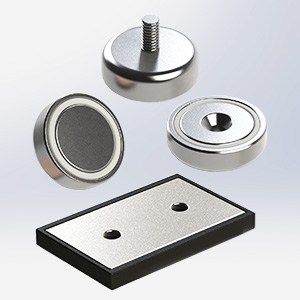Adhesive Magnets: Everything You Need to Know About Easy Attachment

Listen to this Article
Understanding Adhesive Magnets.
Adhesive magnets combine strong magnets with powerful adhesive backing. These magnets are primarily made of neodymium, a rare-earth material known for its exceptional magnetic properties. Moreover, the adhesive backing ensures secure attachment to various surfaces, including metal, wood, plastic, and glass.
Embracing Versatile Applications
Adhesive magnets offer unparalleled versatility, enabling them to be used in various settings for multiple purposes. Let's explore some common applications:
- Home Organization: Simplify your home organization by using adhesive magnets to hang lightweight items such as keys, small tools, or utensils on your refrigerator or any other metal surface.
- Office and Workspace: Keep your workspace clutter-free with adhesive magnets. They allow you to effortlessly hold notes, memos, or important documents on your whiteboard, filing cabinets, or cubicle walls.
- Decorative Displays: Unleash your creativity by incorporating adhesive magnets into interactive and captivating displays. Attach photos, artwork, or posters to any magnetic metal surface and easily swap them as desired.
- DIY Projects: Adhesive magnets are a DIY enthusiast's best friend. The possibilities are endless, from designing magnetic spice racks in the kitchen to creating magnetic tool holders in the garage.
Strength and Durability
Despite their compact size, adhesive magnets possess remarkable strength. Neodymium magnets, commonly used in adhesive magnets, rank among the strongest permanent magnets available. As a result, they can securely hold lightweight objects, ensuring long-lasting durability.
However, it's crucial to consider the weight and size of the items you plan to attach. Opting for magnets with a higher magnetic pull force is advisable for heavier objects.
Easy Attachment
The convenience of adhesive magnets lies in their effortless attachment and removal process. Thanks to the magnetic attraction, there's no need for drilling holes or using traditional fasteners. Simply peel off the protective film, place the adhesive side onto the desired surface, and firmly press. The magnet will instantly adhere, creating a robust bond.
Safety Considerations
While adhesive magnets are generally safe, handling them with care is crucial. Keep them out of the reach of young children to prevent any accidental ingestion, as neodymium magnets can pose hazards if swallowed.
As with all magnets, avoid placing adhesive magnets near magnetic media such as room keys or credit cards, as their strong magnetic field can interfere with magnetic strips.
Adhesive magnets provide a practical and convenient solution for a wide range of attachment needs. Their versatility, ease of use, and durability make them an excellent choice for organizing your home, enhancing your workspace, and creating interactive displays. You can bid farewell to drilling holes, damaging surfaces, or struggling with traditional fasteners with adhesive magnets. Embrace the simplicity and efficiency of adhesive magnets and revolutionize the way you attach objects in your everyday life. Magnetic attachment is growing year over year with more products using magnets every day.
